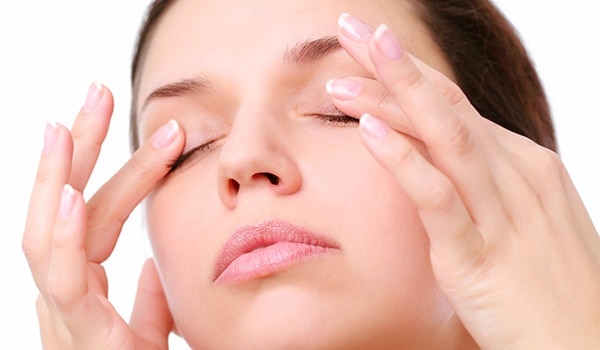Dry eyelids in winter
In winter, many people complain of dry skin, not only on the face and eyelids but other parts of the body (e.g. arms or lower legs) can also be affected. The reason for this is the “unfriendly” weather conditions in winter: the lower humidity generally dries out the skin more quickly, but the constant alternation between the cold, sometimes icy air outside and the dry, warm heating air inside is much more severe.
The cold causes the superficial blood vessels in the skin to narrow, i.e. to contract, so less blood can flow through. At the same time, this also means that the skin is supplied with less blood, although this transports all the essential nutrients for healthy skin.
Alternating dry heating air ensures that the protective film on the skin is attacked, less sebum is formed in the sebaceous glands, and the protective layer cannot be optimally developed again.
In addition, wind and rain wear away the protective greasy film so that moisture can be lost more easily via the surface. The skin on the face and eyelids, in particular, is usually not protected from the weather in winter and is, therefore, the most vulnerable.
Dry eyelids in pregnancy
Dry skin or skin areas – including on the eyelids – are not uncommon during pregnancy. However, one could almost assume precisely the opposite since it is known that pregnant women often store a lot of water in the body and the skin.
The problem is that the water stored in the skin accumulates almost exclusively in the subcutaneous fatty tissue, which means that the skin appears tighter. Still, there is a lack of moisture in the outer layers of the skin, so it can also be dry at the same time.
In addition, hormonal changes during pregnancy generally also lead to changes in the skin. These circumstances alone can lead to dry, brittle, cracked skin, among other things – impure skin, dry eyelids and increased acne on the face.
Dry eyelids in toddlers
Small children are often sensitive to their environment, mainly because their immune systems are not yet fully developed. Children’s skin can also be quickly irritated by various substances contained in detergents, care products and food.
In young children, dry eyelids can be caused by an allergy. Frequent rubbing of the eyes can also be a sign of this example. Furthermore, allergies also cause reddened and swollen eyelids, particularly in the morning.
In general, parents should always consult a doctor if their child has an eye disease. To clarify an allergy, various allergy tests can be carried out at a young age. Parents should then ensure that the allergen is kept away from the child.
Dry eyelids can also be the result of neurodermatitis in young children. A specialist doctor should accompany the treatment of neurodermatitis in a small child. The parents can regularly cream the affected skin with a greasy eye ointment with dexpanthenol.
This often results in rapid improvement. The course of the disease should be monitored more frequently in infancy.
Dry eyelids can also be an indication of the onset of a cold that is accompanied by a fever. Parents should then make sure they drink enough fluids. It may also be necessary to see a doctor.

